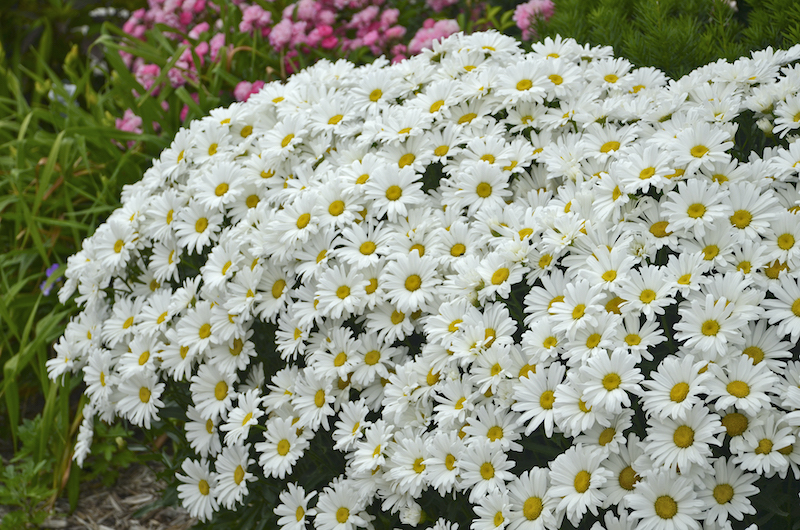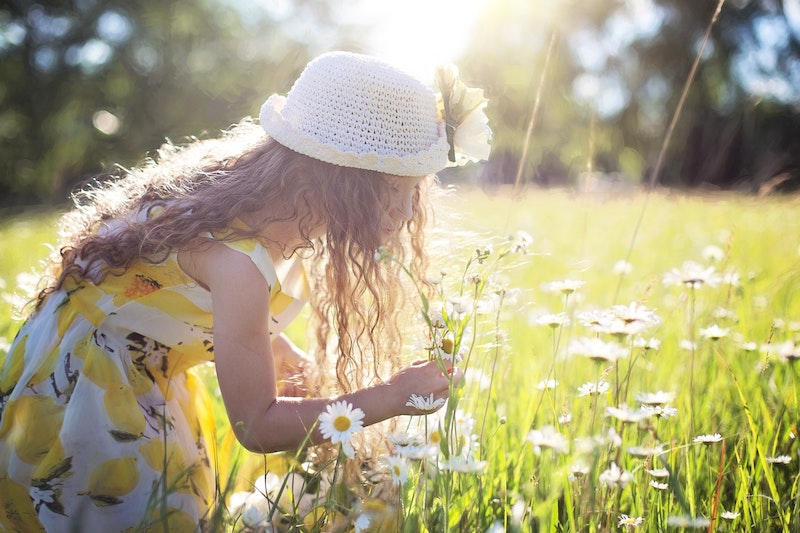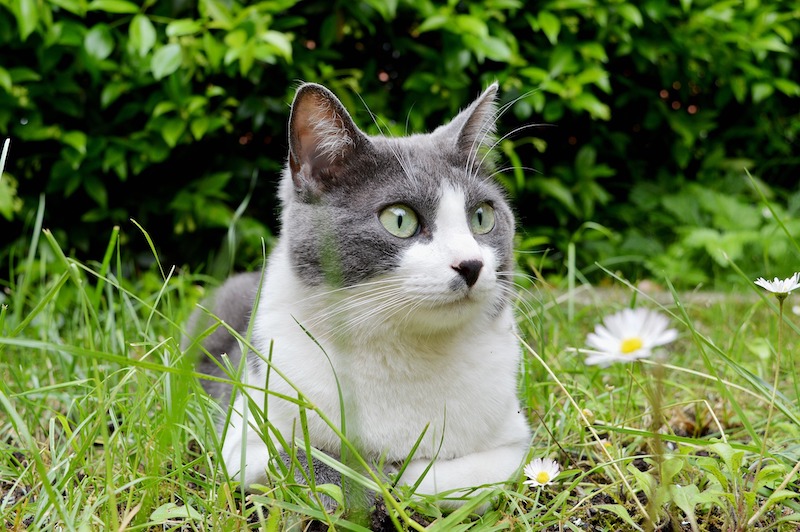Although there are types of Daisies considered edible for humans and animals (the most common being Bellis perennis or Lawn Daisy), all parts of the Shasta Daisy, Leucanthemum x superbum, are mildly toxic. The plant’s leaves and stems contain a sap that causes skin irritation, especially for those who have sensitive skin, or intestinal irritation when ingested in large amounts.

Are Shasta Daisies Poisonous to Children?
Children, big and small, should be encouraged to not eat the flowers, stems, or roots of Shasta Daisy. All parts are mildly toxic and can produce a rash of the skin and mouth, and intestinal upset. Crushing the leaves or rubbing pollen from the center of the flower on the skin may produce a form of atopic dermatitis. Eating large amounts of stems and leaves will cause diarrhea and vomiting.

Are Shasta Daisies Poisonous to Dogs?
Dogs who like to chew on plants need to be excluded from areas where Shasta Daisy is growing; the leaves and flowers will cause mouth irritation and intestinal upset when moderate amounts are ingested. Puppies and smaller breeds of dogs may be affected more than larger dogs due to their lower weight. Any pollen that gets on the fur of your dog should be brushed or washed out. The pollen can irritate the skin of humans and dogs as well as increase the effects of seasonal allergies in some people. Dogs that are treated with flea and tick medications based on pyrethroids may be more sensitive to Shasta Daisy.
Are Shasta Daisies Poisonous to Cats?
Cats may be more likely to have skin irritation from Shasta Daisy pollen after rubbing against planters or rolling in the garden. The smaller size of most cats also makes them more likely to react after ingesting small amounts of the leaves or flowers. Reactions are generally mild, including intestinal upset and a rash of the mouth or skin. Cats that are treated with a flea or tick medicine based on pyrethroids may be more sensitive to the toxins in Shasta Daisy.

Are Shasta Daisies Poisonous to Other Animals?
Shasta Daisies are almost immune to deer browsing or damage from rabbits, slugs, and snails. These plants contain mildly toxic compounds that act as a natural pesticide and make the leaves bitter to eat.
Livestock tend to ignore Shasta Daisy if other enticing plants are available.
Symptoms Of Shasta Daisy Poisoning
Always check with your doctor or veterinarian for guidance if you suspect Shasta Daisy poisoning.
Here are some common symptoms to look out for:
- Vomiting
- Diarrhea
- Abdominal pain
- Hypersalivation
- Shaking
- Trembling
- Dermatitis
- Agitation
- Appetite loss
- Convulsions
Preventing Shasta Daisy Poisoning
Children and pets should be kept away from toxic plants. The easiest way to do this is to exclude the child or pet from where the plant is growing with barriers, or keep containers of the plant out of reach. Cut flowers that are brought indoors should be put in a spot where cats and children cannot reach them. Make sure to pick up fallen petals.
Pet Poison Helpline
If something were to happen to your furry friend, and you suspect that they are suffering from Shasta Daisy poisoning, there is a poison control hotline to call for 24/7 vet advice. It is called the Pet Poison Hotline, and their phone number is (855) 764-7661.
Sources: "Leucanthemum - (Ramond.)DC." Plants for a Future. pfaf.org
 |
Author Robbin Small - Published 3-13-2023 |
